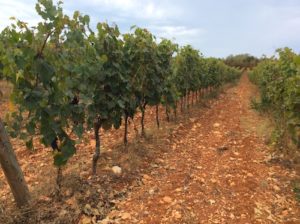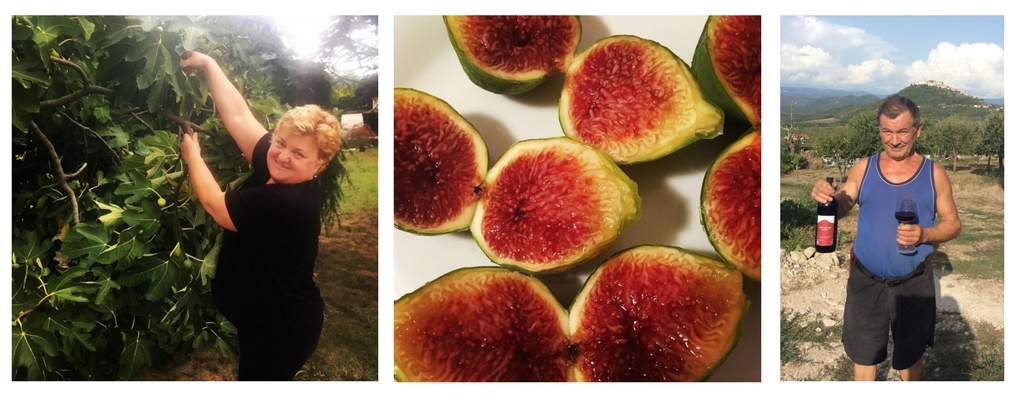I don’t know what’s not to love about Istria. The people welcome you as if you have returned home after a long voyage; the rolling green hillsides are crowned with Medieval castles, and this is a land of truffles and wine. Honestly, within about an hour of my arrival, I was considering permanent relocation.
Before I jump into the truffles and wine – and believe me, I will – there’s something you need to know about Istria. This peninsula has changed hands more times than the card deck of a casino. Today it is Croatian, but not so long ago it was Yugoslavian, after it was Italian and before that it was Austro-Hungarian. Confused? This is all just in the last century, so we haven’t even mentioned the Romans, the French and the Histri that came before. Suffice to say that, even within one household, it’s not unlikely to find blood relatives born into several different nationalities. But while the concept of nationality in Istria feels a bit abstract, the identity of Istria couldn’t be any clearer. This large peninsula is a world unto itself, filled with beautiful flavours and interesting native grapes.
Everything in Istria feels quite small – villages have a handful of houses, towns a few dozen and cities only a few hundred. (Istria is home to Hum – the smallest town in the world, with a population of 21.) Vineyards are no exception. Most people own a few vines, which they count by plants rather than hectares, and traditionally the grapes are just used for wine made for their family mealtimes. It’s only recently that a handful of producers have started exporting their wines. And thank goodness. Because there are many that you’ll want to taste.
Istria is leading the way in Croatia’s quality revolution and, although it only has 4,000 hectares of vines today (compared to over 40,000 hectares pre-phylloxera), you are likely to find Istria’s wines reaching other shores. It is one of the most renowned wine regions in the Balkans and certainly the most developed in terms of wine tourism.
The wines and terroir of Istria
 Istria has four soil types – white, grey, red and black. They are all predominantly clay-based but often mixed with limestone, rocks, marl and sandstone. Red soil (terra rossa) is the most commonly used for wine production, especially towards the coast, followed by white and grey soils.
Istria has four soil types – white, grey, red and black. They are all predominantly clay-based but often mixed with limestone, rocks, marl and sandstone. Red soil (terra rossa) is the most commonly used for wine production, especially towards the coast, followed by white and grey soils.
 The soils and the rolling hillsides, altitude (the highest peak – Učka – is 920m above sea level) and proximity to the sea are what influence the wide range of wine profiles you’ll find. However, while everyone has been making wine for a long while here, the main game changers in Istrian wine are the grape variety and winemaking style.
The soils and the rolling hillsides, altitude (the highest peak – Učka – is 920m above sea level) and proximity to the sea are what influence the wide range of wine profiles you’ll find. However, while everyone has been making wine for a long while here, the main game changers in Istrian wine are the grape variety and winemaking style.
Let’s start with the most emblematic of all, the Queen of Istria: Malvasia Istriana, which makes up over two-thirds of Istria’s wine production…
Malvasia Istriana (Malvazija Istarska)
Malvasia is a term loosely used for many different wine varieties found around the Mediterranean, but Istrian Malvasia (Malvazija Istarska) is only found here. And you can find it by the shedload – anyone who produces wine commercially in Istria will have at least one Malvasia.
There are two styles to try:
- Young, stainless steel-fermented Malvasia
When quickly pressed after harvest, this white variety is not particularly aromatic in the nose – although it can be rather more so on the palate – with soft blossom and orchard fruit notes that sometimes move into almond. It tends to be bright and fresh which works nicely with lighter dishes and its slightly saline, mineral finish combines nicely with fresh seafood.
- Aged, skin-contact Malvasia
The aged Malvasia with extended skin contact is where we start to have a bit more fun. It takes a while to fully extract the juice from Malvasia grapes, so if you press them immediately, you might only get 65% of the potential juice, and flavour, according to winemaker Dimitri Brečević. Leave this wine on the skins though – or aged in traditional acacia barrels – and it develops nutty, tropical and wild flower notes. It also has this characteristically honeyed note which gives you a Mediterranean warmth while still having that saline, mineral finish. This is, quite definitely, food-worthy wine. My favourite pairings involved truffle. Which also happens to be native to Istria. Locals swear by the white truffle with aged Malvasia. It does this beautiful honey, earthy, salty dance in your mouth and is undoubtedly ‘the taste’ of Istria that I’ll hold in my memory.
Teran
 If you love the style of high acid, high tannin (think Italian) wines that aren’t high octane, you’ll love Teran. I’m surprised this wine hasn’t had more of an international reverberation. If it does soon, you heard it here first 🙂 This variety gives an amazing amount of colour, although Teran needs a lot of sunshine to ripen. If you have a wet year in Istria, such as 2014 for example, you can forget about making decent Teran as a red wine. In that case, it’s better to press it and make sharp sparkling wine or crisp rosé. But when you do have a long, sunny ripening period, you can make some seriously interesting and age-worthy wines.
If you love the style of high acid, high tannin (think Italian) wines that aren’t high octane, you’ll love Teran. I’m surprised this wine hasn’t had more of an international reverberation. If it does soon, you heard it here first 🙂 This variety gives an amazing amount of colour, although Teran needs a lot of sunshine to ripen. If you have a wet year in Istria, such as 2014 for example, you can forget about making decent Teran as a red wine. In that case, it’s better to press it and make sharp sparkling wine or crisp rosé. But when you do have a long, sunny ripening period, you can make some seriously interesting and age-worthy wines.
You get Teran in all shapes and sizes. The one thing you can guarantee is the acidity. So even in warm years you’ll get rosé and sparkling wines from Teran which capitalise on its low pH and red fruit aromas. For red wines, the aromas can range from violets and forest fruits to savoury and meaty notes of bacon and blood sausage, depending on when you pick it, the type of soil where it’s planted and how you vinify it. You’ll find the beauty and the beast in Teran. It’s both rustic and elegant, which is what makes it so interesting and hard to pin down.
The pairing for Teran? Am I allowed to say truffles again? But this time black. And made into a butter drizzled onto a steak. Rare, bloody, steak.
Refošk
I wish I had the chance to try more refošk in Istria because the wines I tried rather impressed me. More approachable than Teran with attractive bramble and berry notes. Refošk has an uphill battle to fight though, as neighbouring Slovenia has decided to call their Refošk grapes Teran… (Don’t ask.)
International Varieties
Of course, there are a ton. What’s exciting? Among those I tasted, I enjoyed some of the Syrah (but then Syrah can make interesting wines just about everywhere, I think), and I enjoyed some Cabernet Sauvignon but I think these were just well-made wines rather than varieties that necessarily have a future in Istria. My money is on the native varieties, which are far more unique and memorable.
What else is there to do in Istria?
While the beach is the main draw for most tourists in Istria (blue, crystal-clear water lapping up on white, rocky shores), I would recommend heading inland to the beautiful hill-top Medieval cities. One of the highlights is Motovun, which happens to be the heart of wine country. This walled city is only accessible by foot (unless you are a local or have a special pass) and has steep, winding cobbled streets. Gateways and doorways open into different alleyways and every degree of this panoramic view shows you a different perspective of the valley below with the many vineyards and other hilltop towns just visible in the distance.
Spend a day wandering the streets and be sure to pop into Konoba Fakin, which not only has one of the most beautiful views down the valley and into the vineyards but happens to serve their excellent wine too. This is where I had the Malvasia and truffle revelation.
And truffles… Istria is one of the world’s truffle capitals with white truffles that rival the best of the Piedmont in Italy. If you go in season (September – January) you can spend the entire day truffle hunting and then shaving your findings onto big bowls of buttery pasta and drinking Malvasia. Who wouldn’t want to do that?
Where to stay in Istria
There are so many different boutique hotels, homesteads and apartments around Istria. I chose to Airbnb it and I was thrilled to spend a few nights with local families who fed me fresh figs and tomatoes from the garden, covered me in friendly kisses and invited me to drink coffee with them every hour of the day. I also just happened to stay with a family that make wine (I swear I didn’t know!) and I can wholeheartedly recommend their place in Brkac, overlooking Motovun city just a stone’s throw from Fakin winery. I recommend renting a car for this part of the world – mainly because you’ll want to explore and visit different wineries and beaches.

When to go to Istria
Summer is obviously the peak. But I’m planning to return in the late autumn truffle season! And the locals assure me there is festival every week of the year. Here’s a few to get you started: the olive oil festival (March), asparagus festival (April), wine festival (May), cheese festival (July), film festival (July), jazz festival (August), prosciutto festival (October)… the list goes on. Maybe I will relocate…
Other Croatian wine guide articles:

